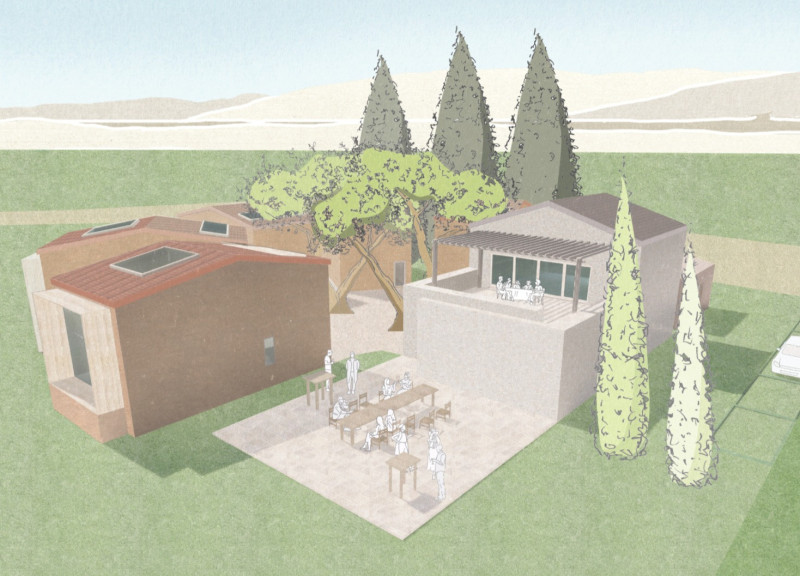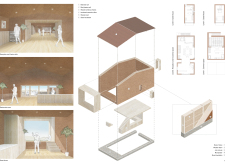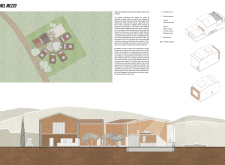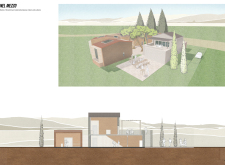5 key facts about this project
Unique Design Approach to Indoor-Outdoor Integration
A key aspect of this design project is its emphasis on thresholds, which serve as vital transitions between spaces. The layout comprises communal areas, private guest accommodations, and dining spaces that are thoughtfully arranged to encourage social interaction while allowing for individual retreat. Courtyards and terraces are strategically placed to provide opportunities for outdoor engagement, enhancing the connection between the built environment and its natural surroundings. The selection of materials underscores sustainability, utilizing local resources such as mud plaster walls and red-tiled roofs that reflect regional architectural traditions. The use of wooden elements for window frames enhances natural light and ventilation, creating a comfortable living atmosphere.
Sustainable Material Choices and Functional Aesthetics
The project employs a diverse range of materials that balance durability and visual appeal. Key materials include mud plaster for thermal insulation, hardwood flooring for warmth and durability, and a stone foundation for structural stability. Notably, the incorporation of straw bales for insulation highlights the project's commitment to sustainable building practices. Each material was chosen not only for its functionality but also to contribute to the cohesive aesthetic of the design. The reception area, central to the project's layout, serves as a welcoming point, facilitating communication among users while showcasing thoughtful design principles. The integration of organic landscaping elements further enhances the project’s overall functionality and aesthetic appeal.
This analytical overview provides a fundamental understanding of the project's design approach and its distinctive features. To explore this architectural design in more detail, including architectural plans, architectural sections, and further architectural ideas, the reader is encouraged to delve deeper into the project's comprehensive presentation.

























